1lumen selects and reviews products personally. We may earn affiliate commissions through our links, which help support our testing.
NEXTORCH K40 review
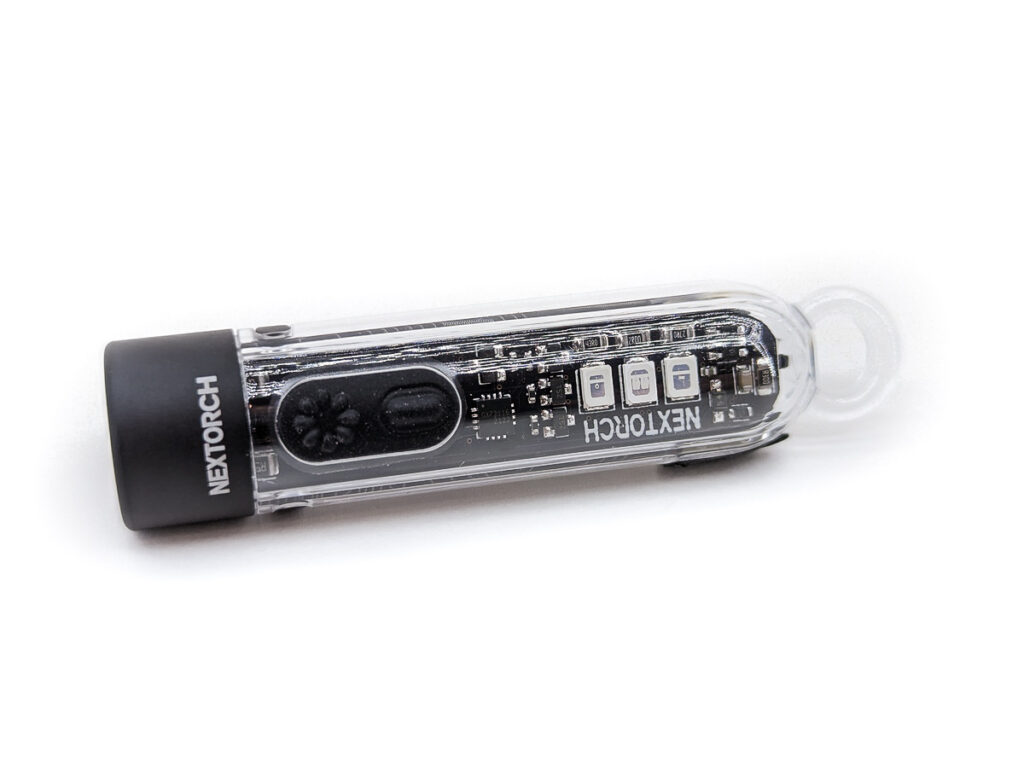
NEXTORCH K40specifications
| Brand & Model | NEXTORCH K40 |
|---|---|
| Flashlight category | keychain flashlight |
| LED | N/A |
| Max. output | 300 lumens |
| Max. beam distance | 78 meters |
| Max. beam intensity | 1520 cd |
| Battery config. | Built-in |
| Onboard charging | USB-C |
| Modes | 3 |
| Blinkies | Strobe |
| Waterproof | IPX4 |
| Review publication date | February 2023 |
Introduction:
I was first introduced to NEXTORCH a little over a year ago when I had the opportunity to review one of their LEPs, the L10 Max. I went into that review unsure of what I would find. I’m pleased to say that NEXTORCH made a good first impression. Their new flashlight that’s up for review is an entirely different specimen, a keychain model named K40. The K40 features a main white LED plus 3 auxiliary LEDs in UV, red, and blue. As you’d expect from a keychain light, the NEXTORCH K40 is small and light, but it’s also feature-packed. Let’s unpack it!
Package quality.
The NEXTORCH K40 came in a fairly nice looking presentation carton that would be at home on a store shelf or display. The outside of the box has a nice picture of the light, along with just enough information to pique one’s interest. Opening the box, you’ll find a clear plastic tray with the goodies packed in:
- NEXTORCH K40
- Charging cable
- Keychain clasp
- Manual
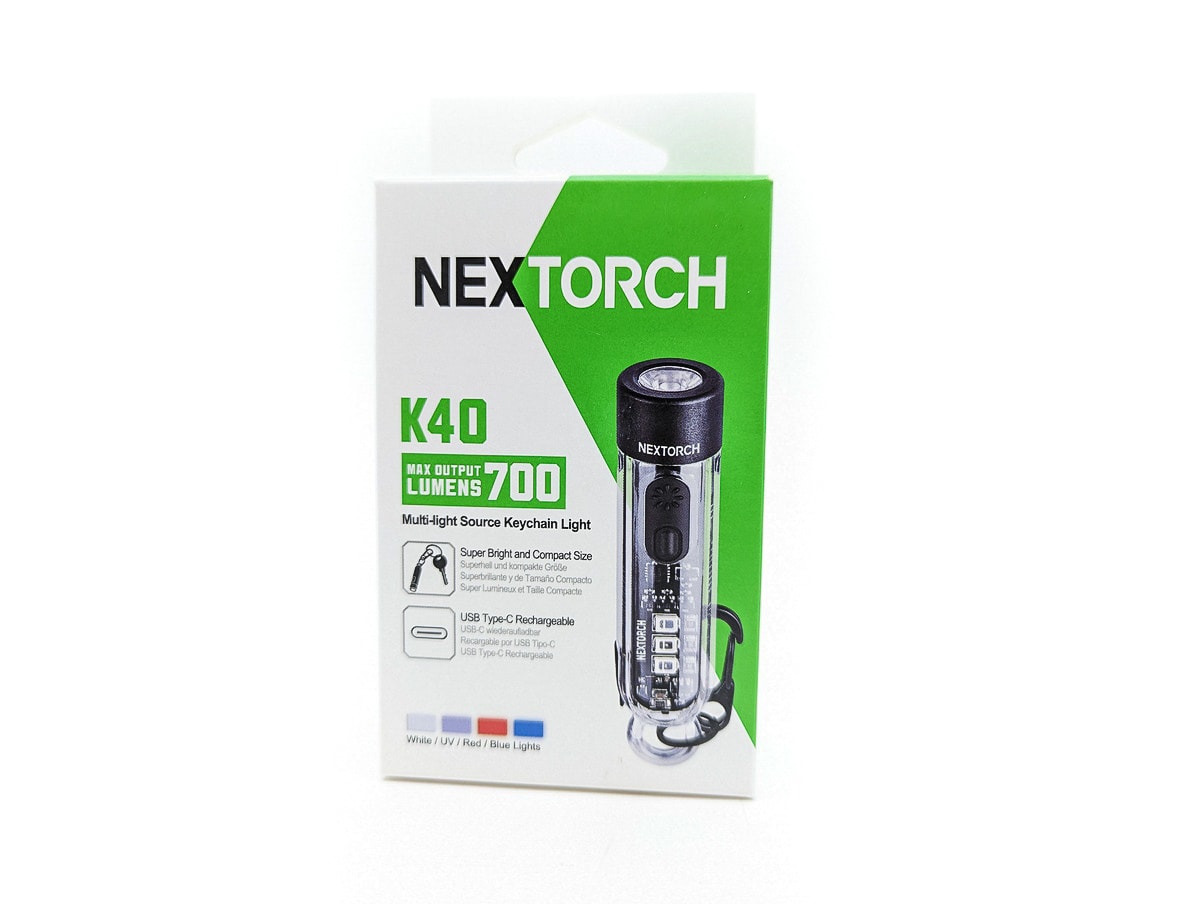

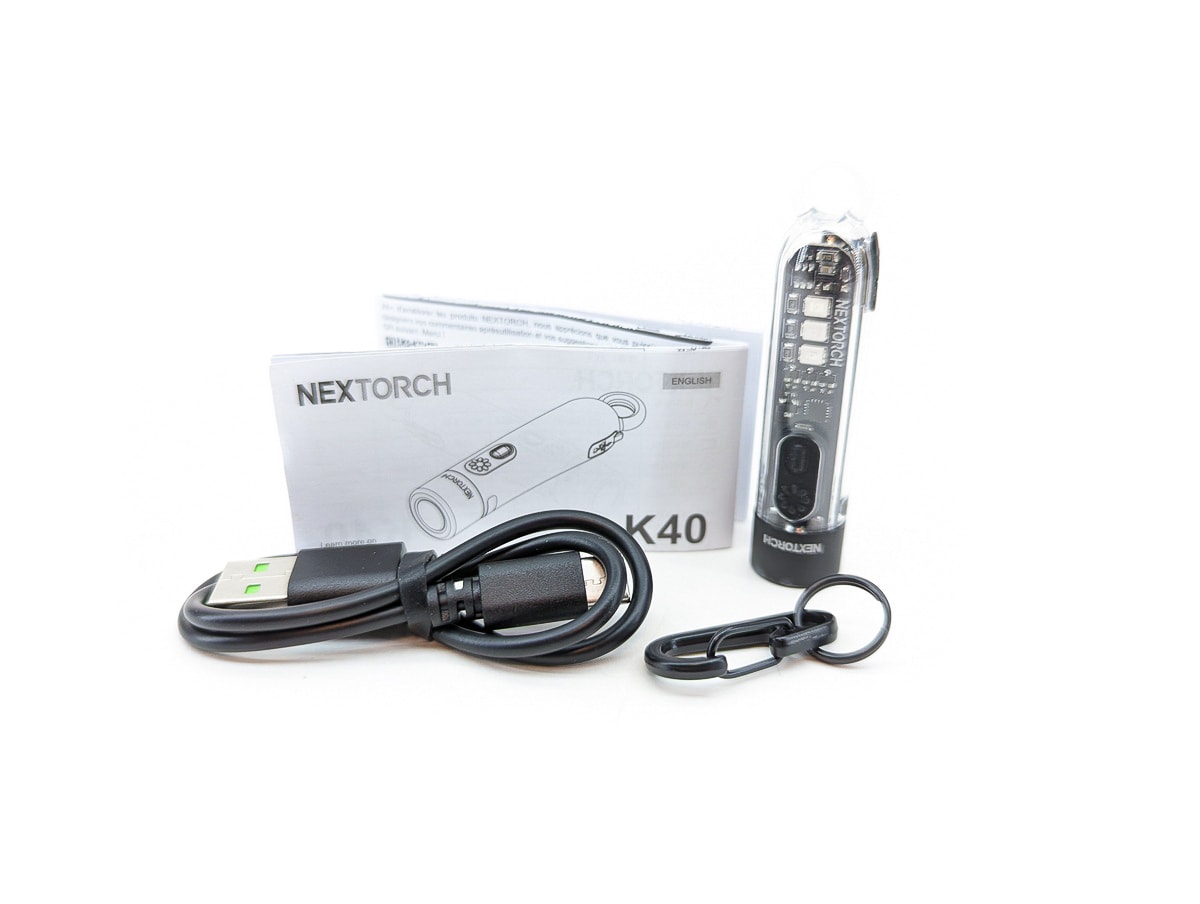
Flashlight in use
The K40 is a slim, sleek little thing, if perhaps a bit slippery due to the glossy polycarbonate construction. The body includes a largish ring that protrudes from the tail that serves as an attachment point. In general, the design of this NEXTORCH reminds me of several keychain lights that you’ll find on the market – a design that seems to have been pioneered by Rovyvon. Unlike those lights, though, the clip on the K40 seems more integrated into the body of the light. In fact, I think the clip is non-removable – at least it seems to be firmly stuck to the light. The stout clip is oriented for a head-up carry, which is also the position you’d want it in if you’re going to put it on the brim of a hat for a makeshift headlamp.
As far as using the NEXTORCH K40 goes, this is a keychain light – so keep your expectations in check. It boasts 300 lumens in a small package, so it’s good for either short bursts of bright light (like navigating to your car or door) or longer running low-light tasks (like reading a book).
Like some of those other keychain lights, the K40 features a few side-firing auxiliary LEDs. There are red, blue, and 405nm UV LEDs. The red LED can be used on its own and is good for illuminating things at night without killing your night vision or potentially disturbing nearby wildlife. The blue LED can only be used in conjunction with the red LED in a flashing pattern which is not too dissimilar from the lights of a cop car. I’d urge caution when using that mode – at least in my state (Illinois), using flashing red & blue lights is a good way to land yourself with a felony charge.
Lastly, the UV light could potentially be useful for the identification of certain minerals, stains, or anti-counterfeit measures. A bit unfortunate is the wavelength that was used: 405nm. That wavelength was probably necessary to be able to shine through the polycarbonate body since PC blocks most UV light. Generally speaking, 365-385nm does in several applications, especially when inspecting US currency for anti-counterfeit markings. Using the K40, I was able to pick up the UV strip on $5, $10, and $20 bills – but it was very faint.
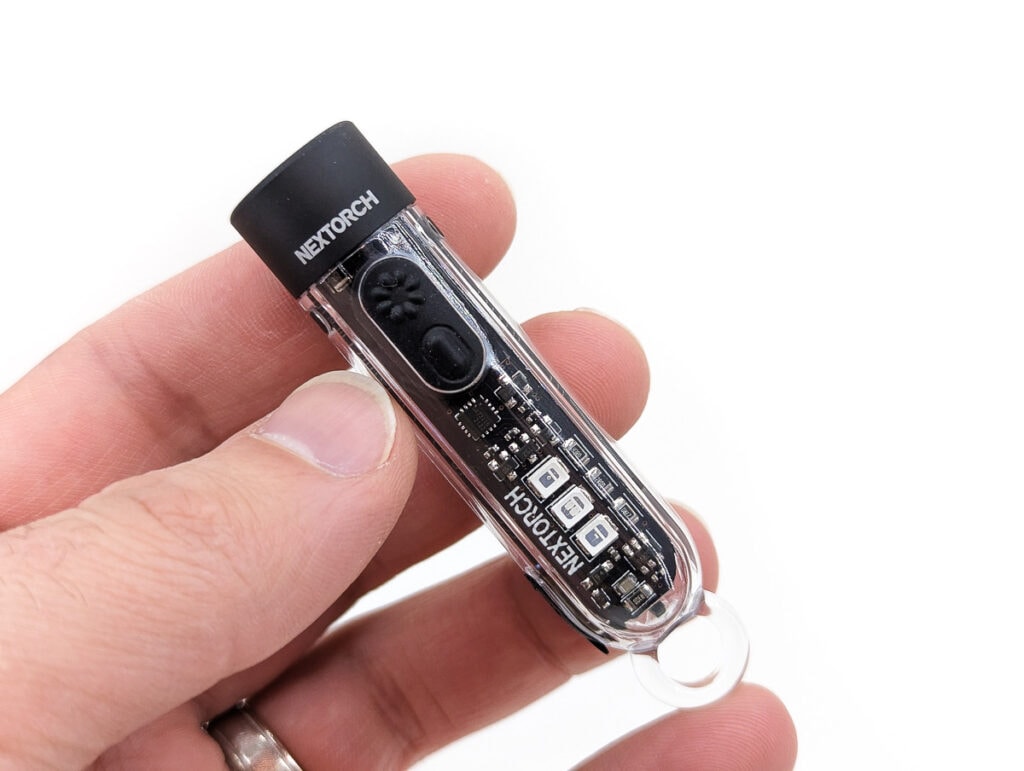
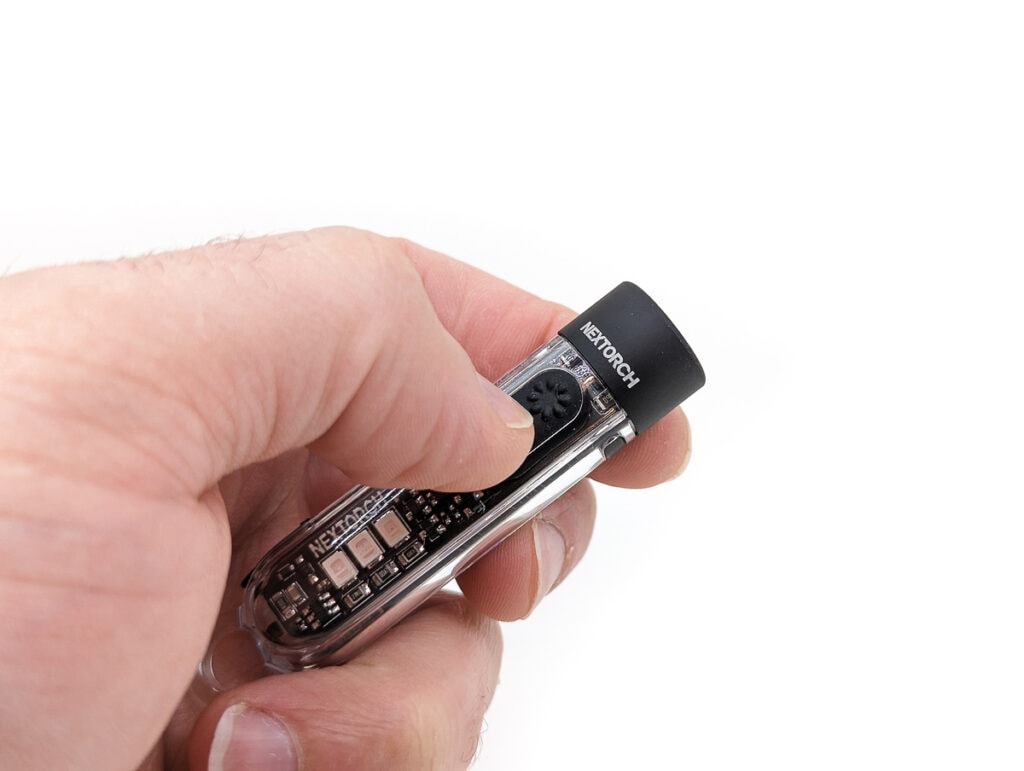
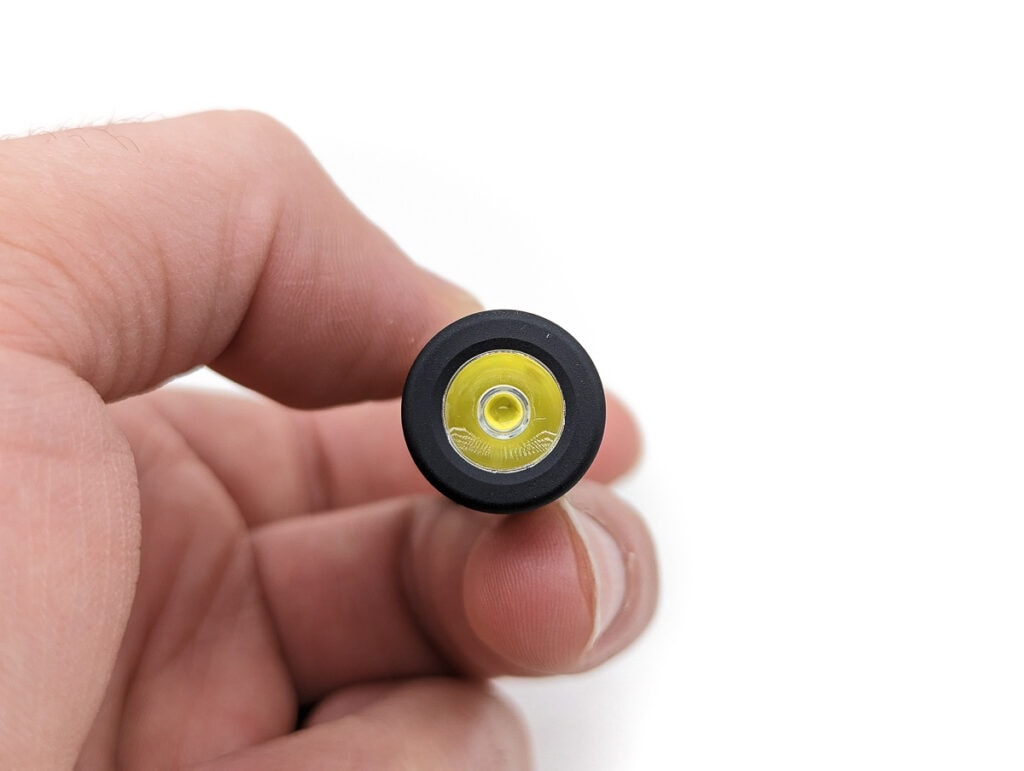
Build Quality and Warranty
The body of the NEXTORCH K40 is constructed of clear, glossy polycarbonate – like what you’d see in safety glasses and such. The clear body lets you see all of the inner workings of the light and it looks pretty slick. The bezel of the light is made from aluminum with a black coating. The aluminum is a bit tougher of a material and helps with some heat dissipation. Overall, the build quality seems nice and well put together. No complaints here.
Warranty:
- NEXTORCH offers a 5-year warranty
- NEXTORCH warrants our products to be free from any defects in workmanship and / or material, we will replace or return faulty item. NEXTORCH reserves the right to replace similar products if original one is discontinued.
- The warranty excludes other accessories, but rechargeable batteries are warranted for 1 year from the date of purchase.
- Any accessories or products are not covered in the warranty, NEXTORCH can repair for users with reasonable fee.
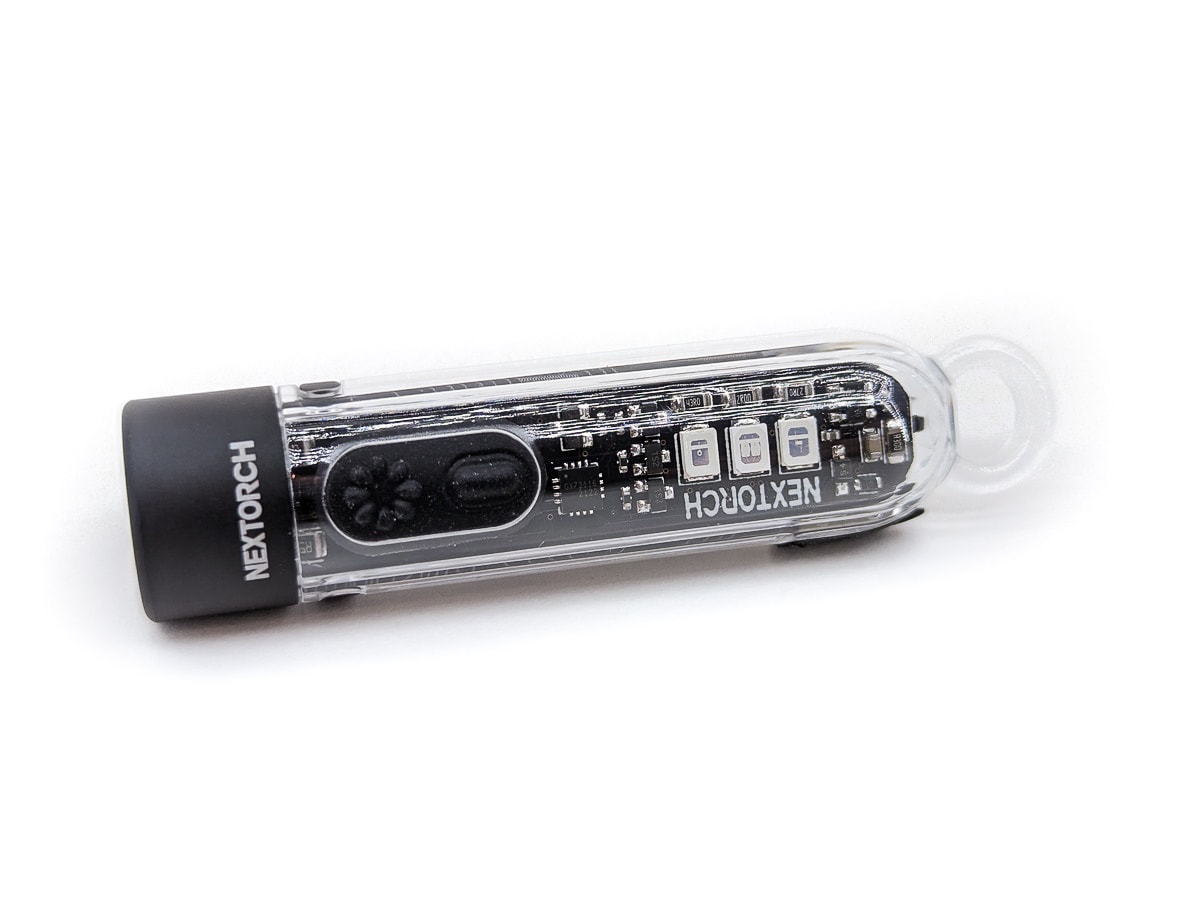
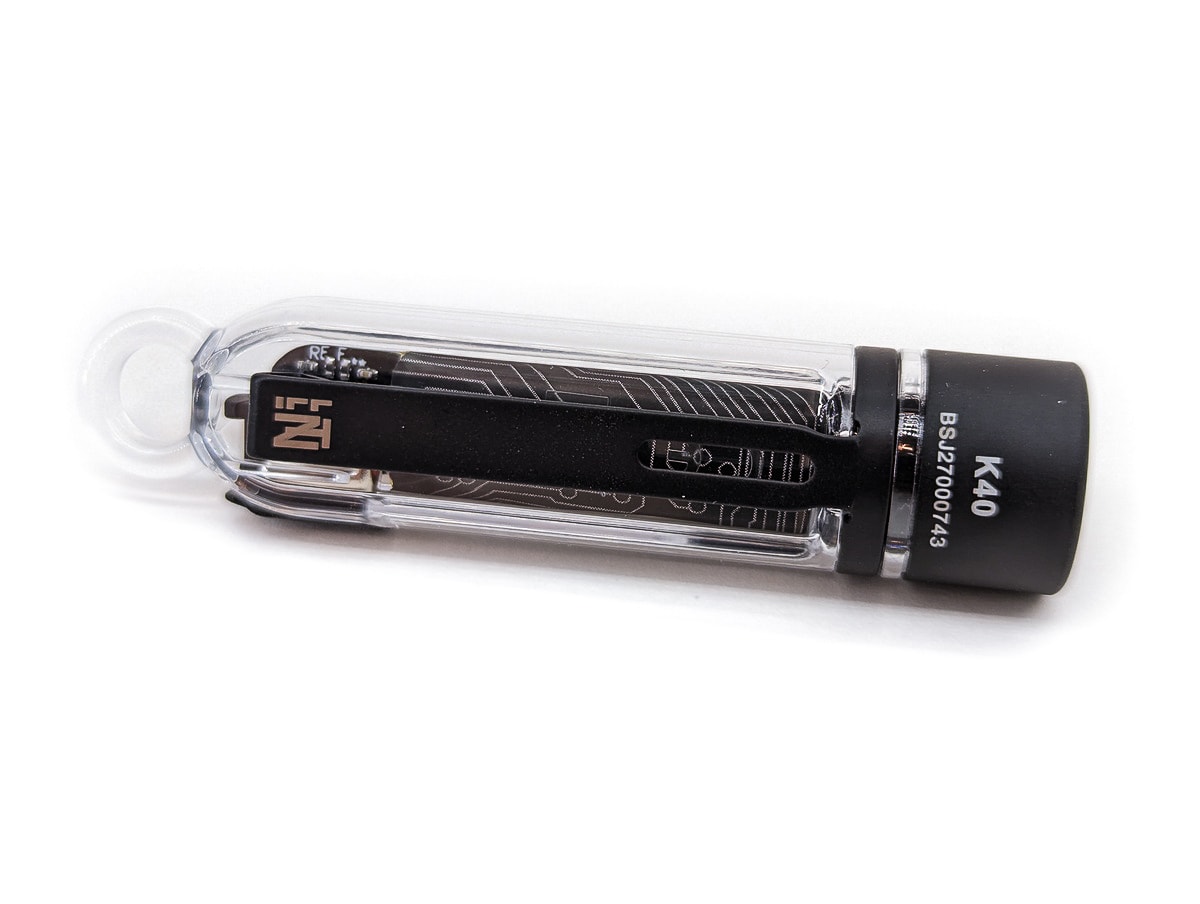
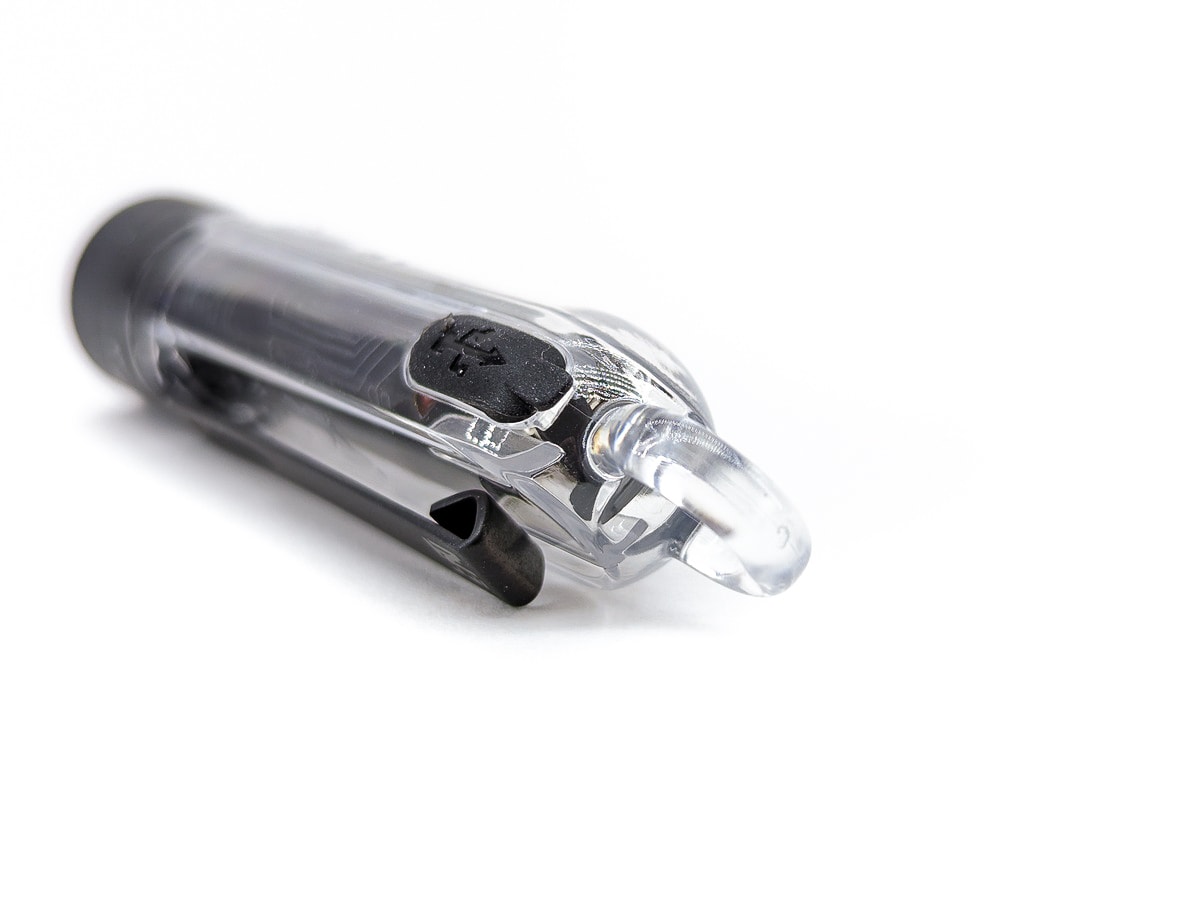
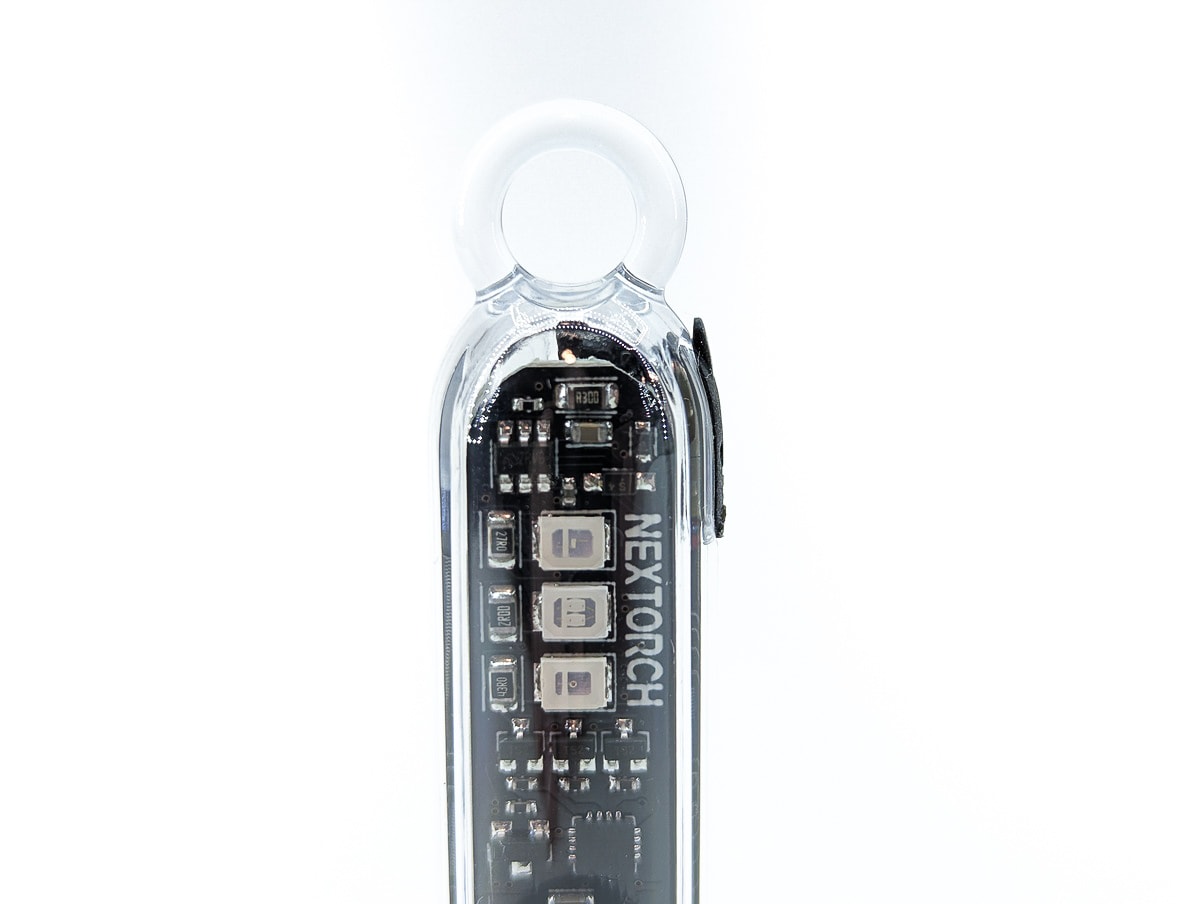

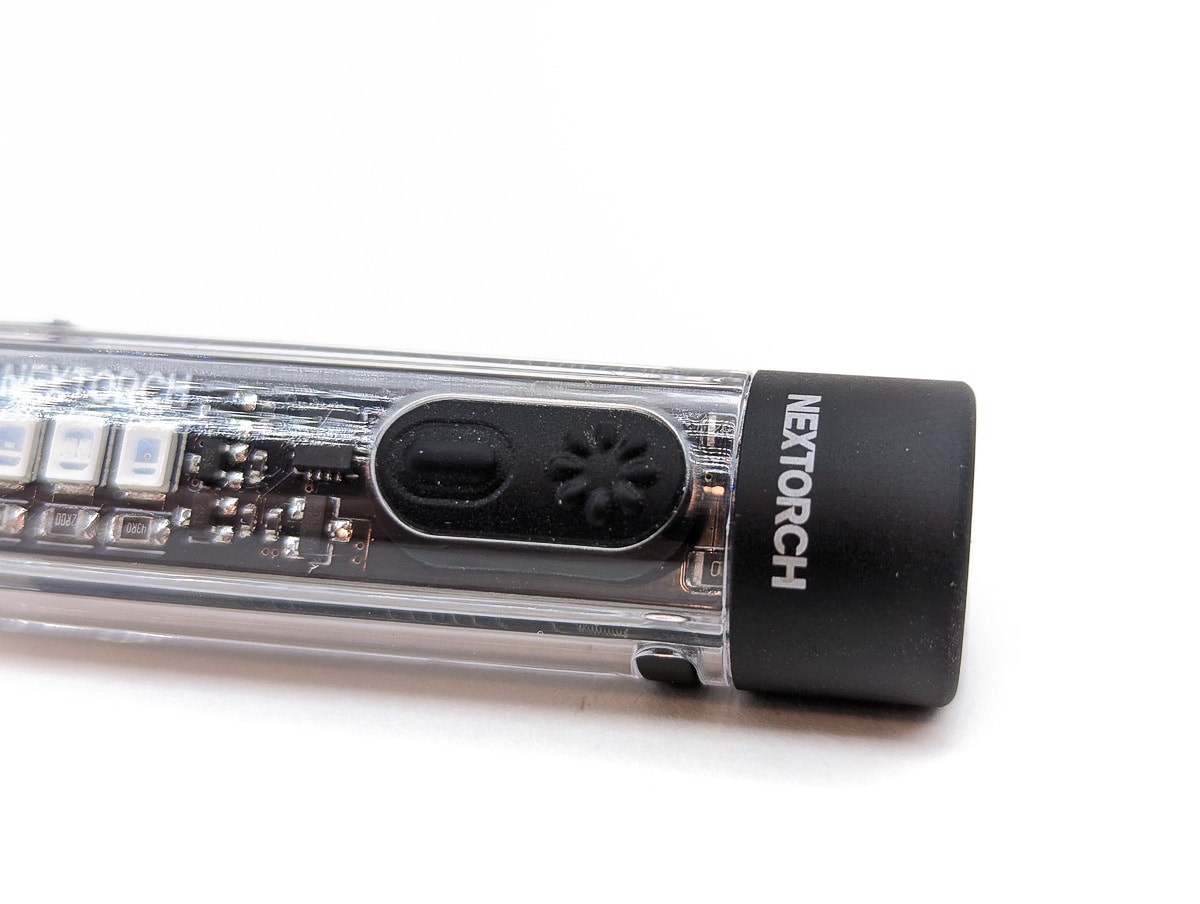
LED, Lens, Bezel, Beam, and Reflector
What LED is within the K40 is a mystery. NEXTORCH hasn’t divulged that information, and it’s a bit tough to tell through the optic. I do see that the “mouse bites” from the bond wires are actually in the middle of opposing sides of the LED, which is a bit distinctive, but unlike any LED that I’m familiar with. The main LED sits below a clear TIR optic. The optic provides a relatively smooth, broad beam which my eyes interpret as definitely in the cool-white arena and a touch bluish.
Opple Light Master readings from High at 3m:
- CCT: 6556K
- CRI: 73.3 Ra
- DUV: +0.0004
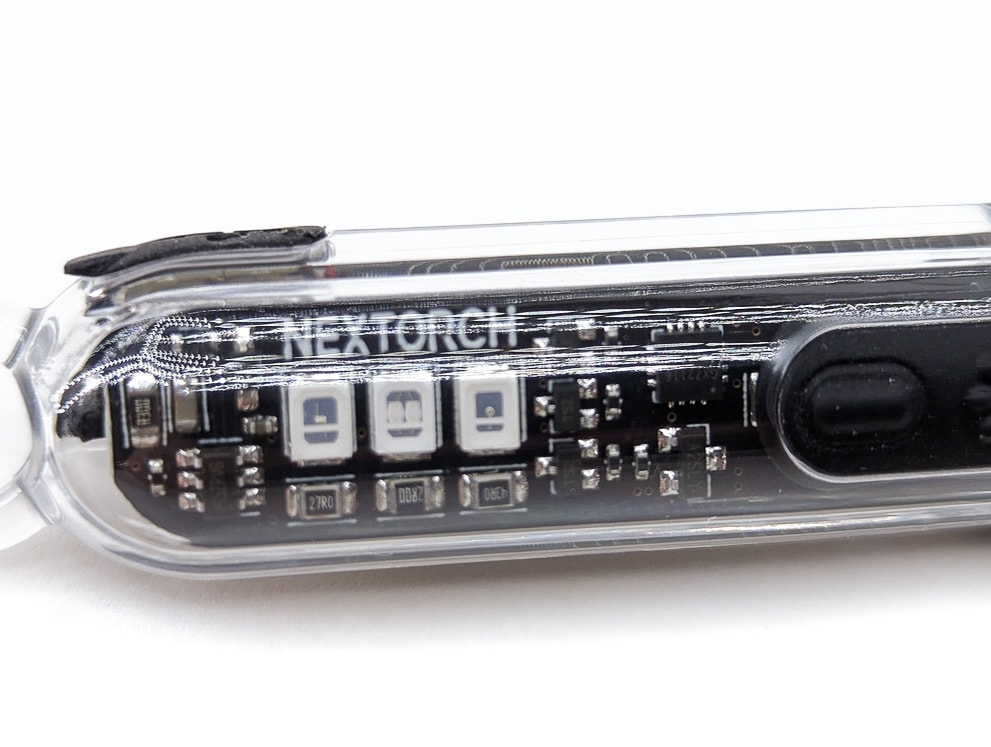




Dimensions and its competition
Dimensions:
| NEXTORCH K40 | Millimeters | Inches |
|---|---|---|
| Length | 73 mm | 2.9 in |
| Head diameter | 17 mm | 0.7 in |
| Body diameter | 17 mm | 0.7 in |
Dimensions are rounded to the nearest millimeter, and to the nearest tenth of an Inch.
Weight:
| NEXTORCH K40 | Weight in grams | Weight in oz |
|---|---|---|
| With battery | 17 g | 0.6 oz |
Weight is rounded to the nearest gram, and to the nearest tenth of an Oz.
Flashlight size comparison with its competition:
Group 1: Rovyvon A8 G3, NEXTORCH K40, RovyVon E7
Group 2: Wuben G2, NEXTORCH K40
Group 3: Skilhunt E3A, Olight i3E EOS, NEXTORCH K40, ThruNite Ti3 V2, Jetbeam Jet-U, Sofirn C01
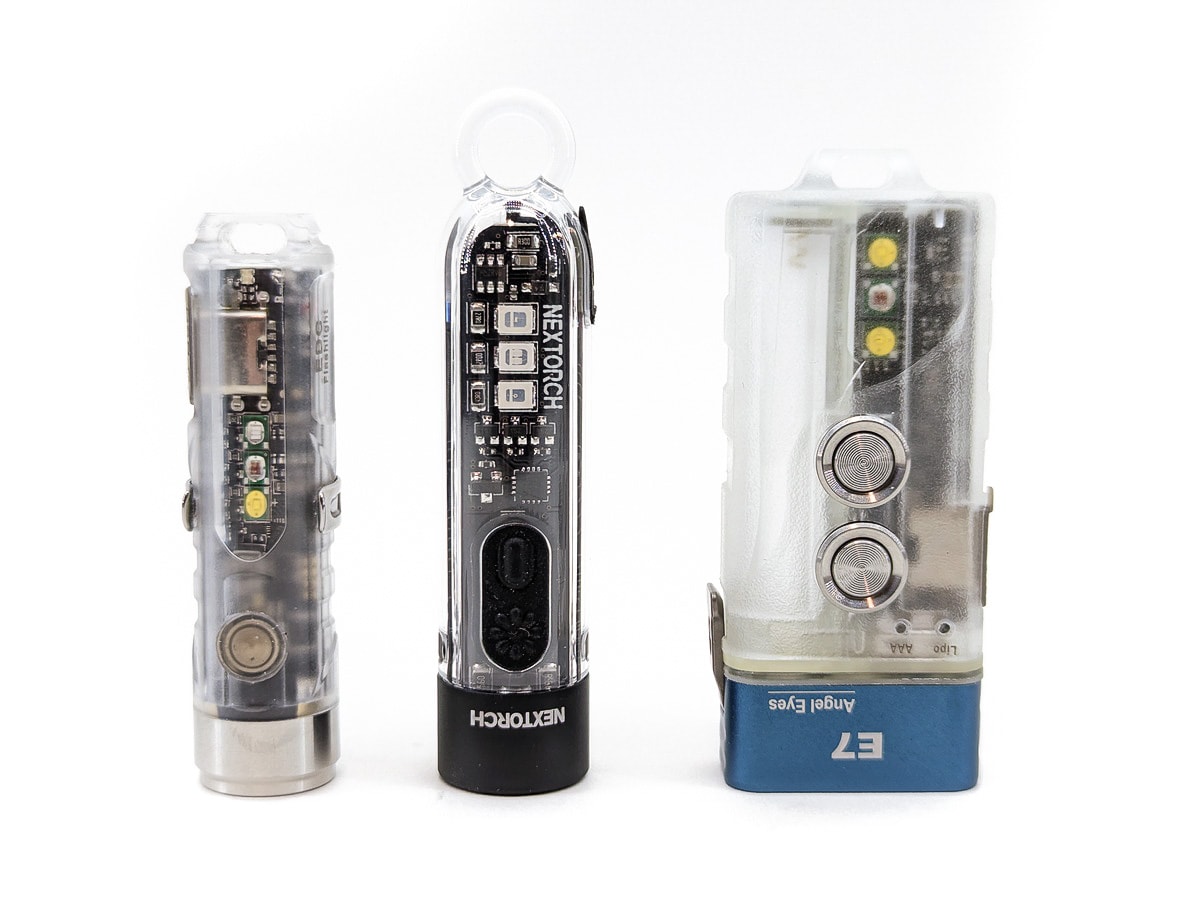

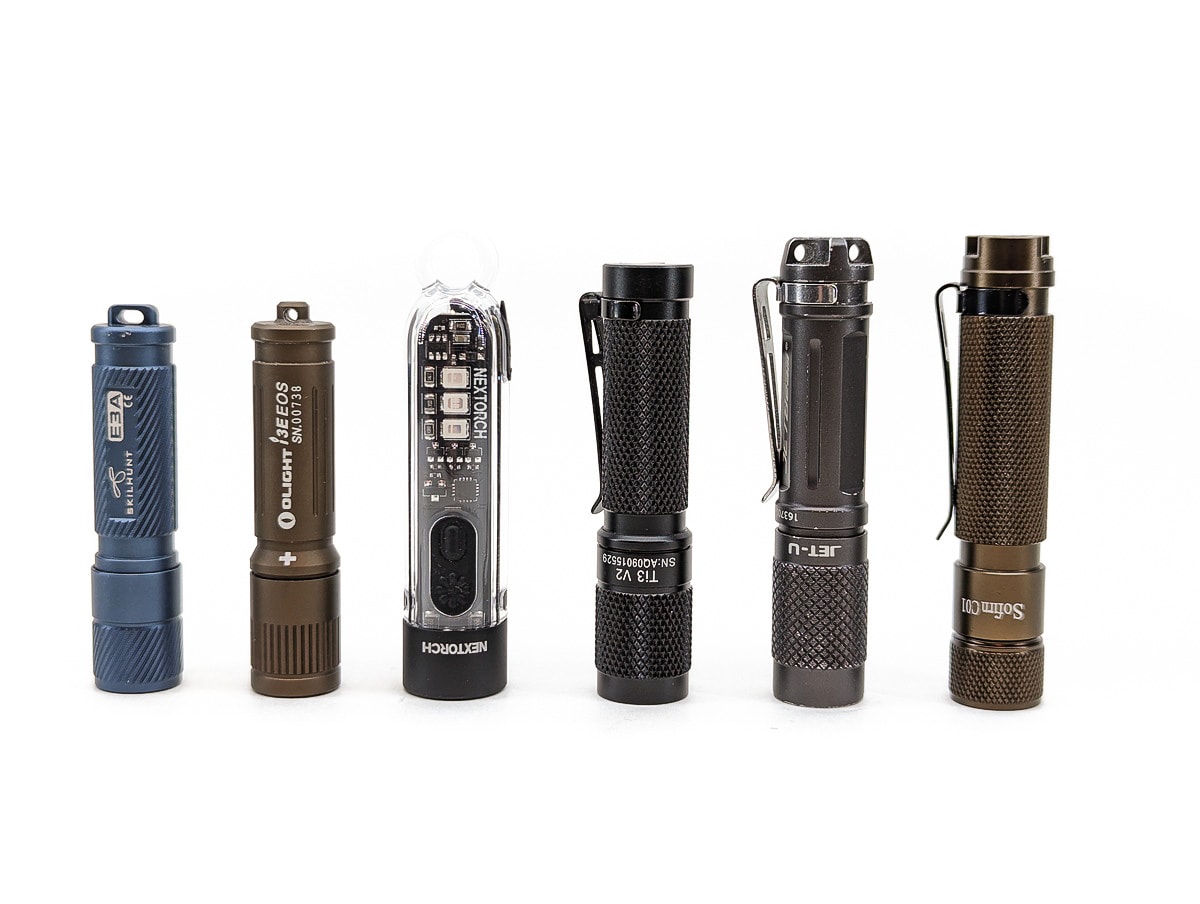
NEXTORCH K40 UI: User Interface and Driver
Available modes:
- Low, Medium, High, Red, UV
Available blinky modes:
- Strobe, Red & Blue Flash
The NEXTORCH K40 has a dual-switch setup. There are 2 e-switches near the head. NEXTORCH hasn’t given them names, so I’ll just refer to them as the front switch and rear switch.
From OFF:
- Front switch, Single click: High mode
- Rear switch, Single click: Strobe mode
- Rear switch, Press and Hold 1 sec: UV mode
From White Light ON:
- Front switch, Single click within 3 seconds of last press: next mode (High > Med > Low)
- Front switch, Single click after 3+ seconds of last press: turn Off
- Rear switch, Single click: Strobe mode
From Aux Light ON:
- Rear switch, Single click: change aux modes (UV > Red > Red & Blue Flash)
- Rear switch, Press and Hold: turn aux Off
Mode memory:
- There is no mode memory
Shortcuts:
- To High: single click from switch (from Off)
- To Strobe: single click rear switch (from Off or On)
Low voltage warning:
- There is an indicator LED between the switches that indicates the battery level:
- Blue light: 70% – 100%
- Blue flash: 50% – 75%
- Red light: 25% – 50%
- Red flash: 0% – 25%
Strobe/blinkies
- Single click the rear switch (from either Off or On) to activate Strobe
Lock-out mode:
- None
PWM
- There is 15.7 kHz PWM
Additional/summary info on the UI:
- The main LED and Aux LEDs can be operated independently of each other and simultaneously. That is, with the White LED on, you can press & hold the rear switch to activate the Aux LEDs. Or with the Aux LEDs on, you can click the front switch to activate the White LED.
NEXTORCH K40 Charging and batteries
The NEXTORCH K40 utilizes a built-in 180 mAh LiPo battery. It is not user-serviceable, but that’s pretty typical for little keychain lights like this. The battery is charged via USB-C, with the port residing under a little rubber plug towards the tail of the light. NEXTORCH says that charging should take around 1.5 hours. That’s pretty accurate. In my testing, I observed a 0.92 watt charge rate (0.18 amps @ 5.3 volts). The charge cycle was done in 1 hour and 20 minutes, transferring 1.1 Wh of power.
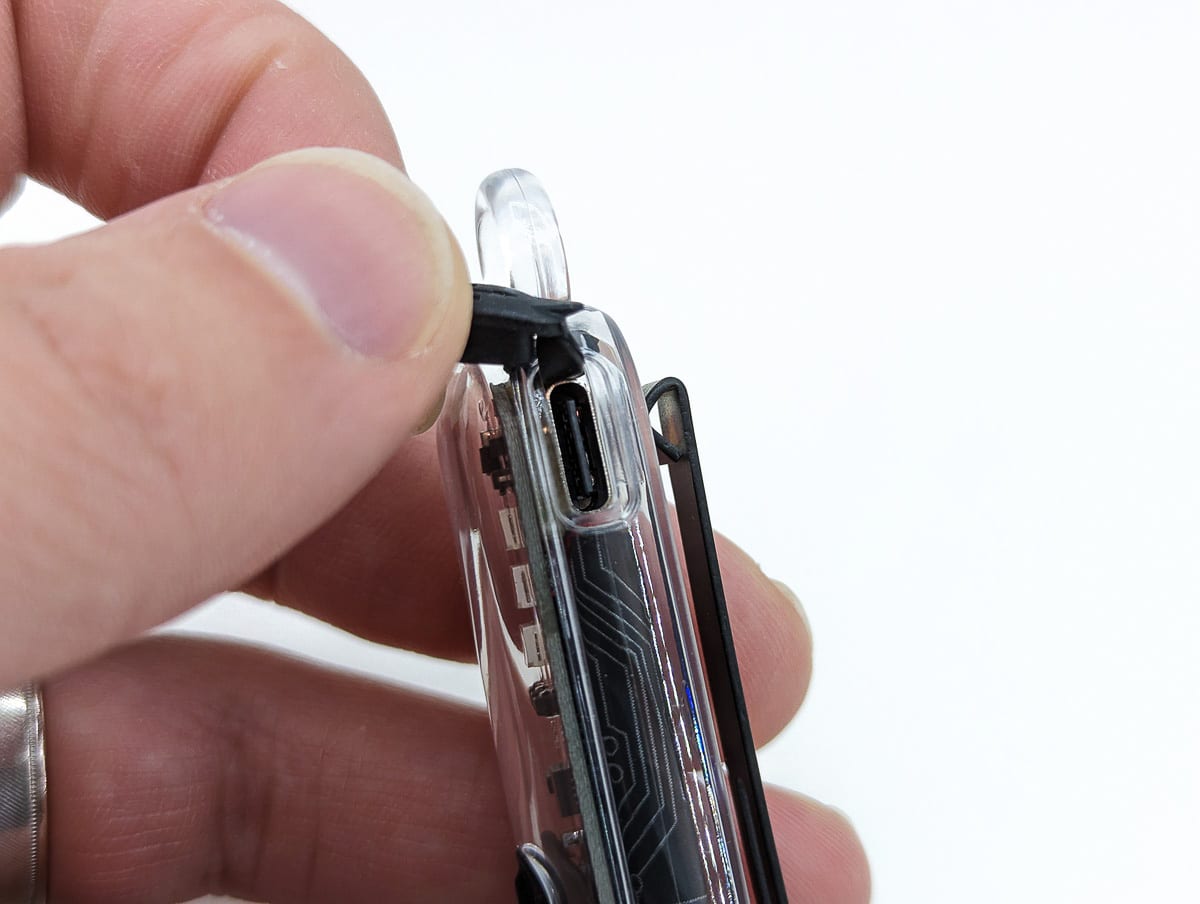
Performance test
Lux was measured by a UNI-T UT383 BT at 5 meters. Lumens were measured in a homemade lumen tube using a VEML7700 sensor, calibrated with a Maukka calibration light.
Lumen measurements (for each mode)
| Mode | Specified | turn on | 30 sec | 10 minutes |
|---|---|---|---|---|
| Low | 10 lm | 7.9 lm | 7.9 lm | 7.9 lm |
| Med | 50 lm | 29 lm | 29 lm | 27 lm |
| High | 300 lm | 340 lm | 310 lm | 76 lm |
Parasitic drain:
- Not measurable due to internal battery design
For the most part, my output measurements meet the specs. Medium mode seemed a bit under-spec, but I’m mostly concerned with the highest mode attaining its claim.
Battery Life: Runtime graphs
| Mode | Specified | Measured runtime ANSI | Time till shut off |
|---|---|---|---|
| Low | 9h 15min | 9h 20min+ | 9h 20min+ |
| Med | 1h 30min | 1h 55min | 1h 57min+ |
| High | 1h | 1h 3min | 1h 13min+ |
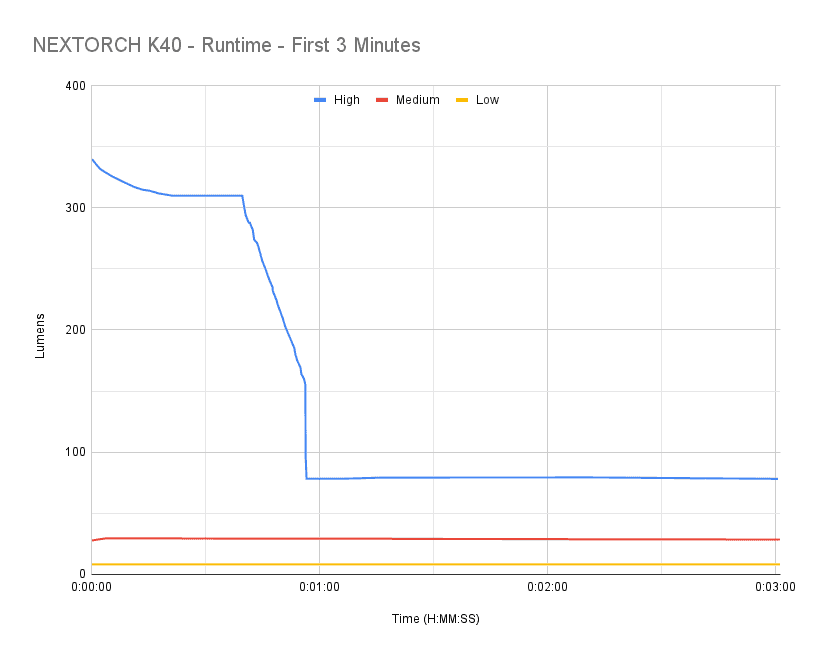
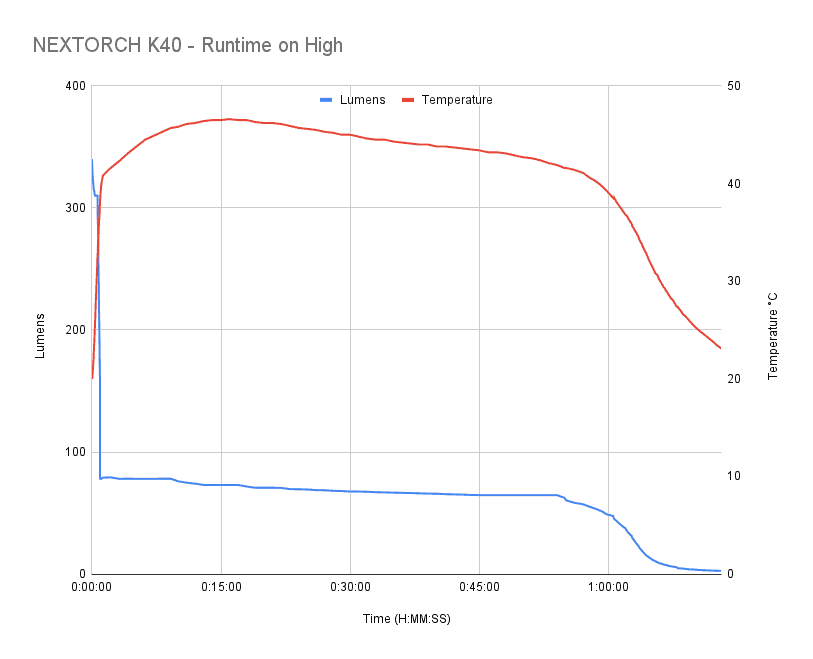
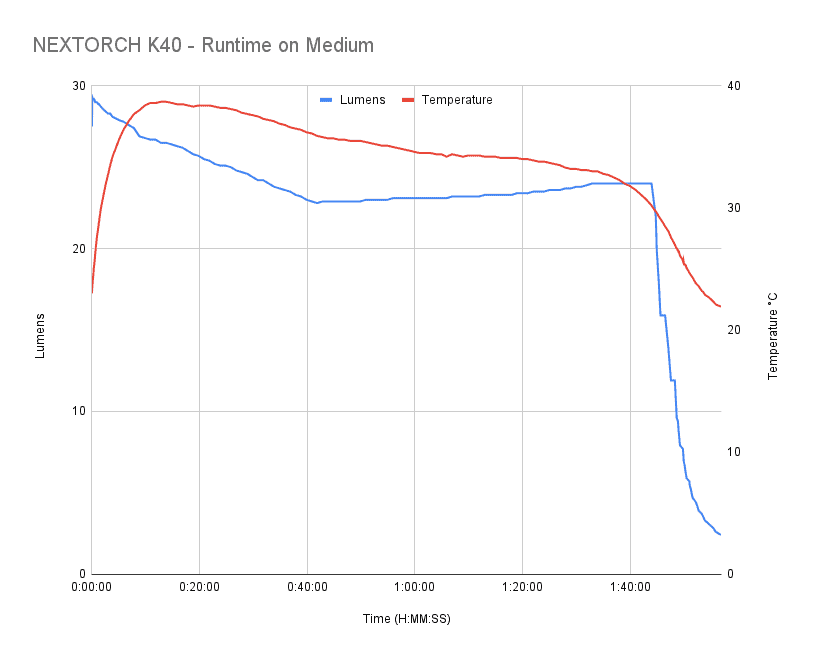
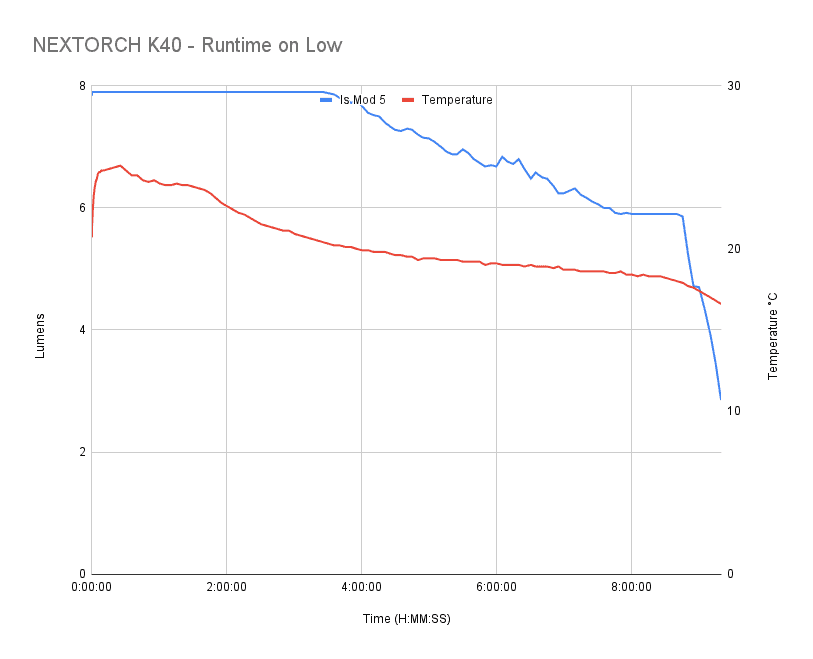
NEXTORCH’s runtime claims seem pretty spot-on. I cut the tests short because the light continued to chug along for hours, slowly decreasing as it went.
About ANSI FL1 standards: The runtime is measured until the light drops to 10% of its initial output (30 seconds after turning on). This does not mean that the flashlight is not usable anymore. The last column shows how long the light actually works till it shuts off. If there is a + symbol, it means that the test was stopped at that particular point, but the light was actually still running. This happens on certain occasions, with certain drivers, firmware, or batteries.
Peak beam intensity and beam distance measurements
Intensity was measured at 5 meters after being turned on for 30 seconds. A UNI-T UT383 BT lux meter was used.
| Mode | Specified | Candela measured | Meters | Yards |
|---|---|---|---|---|
| Low | 40 cd | – | – | – |
| Medium | 232 cd | 300 | 35 m | 38 yd |
| High | 1520 cd | 1700 | 82 m | 90 yd |
Just like in the lumen and longevity tests, the intensity seems right inline with specs. It’s nice to see some accurate numbers.
About peak beam intensity: Peak beam distance according to ANSI FL1 standards: The calculated value of distance in meters at which the flashlight produces a light intensity of 0.25 lux. (0.25 lux is about the brightness of a full moon shining on an object). The columns ‘Meters’ and ‘Yards’ use rounded numbers.
Beamshots
Camera settings and distance:
Beam shots of the building are taken at 5 m (33 yd) using a Pixel 7 set to ISO 800 with 1/30 second exposure time
Beamshots of the following flashlights compared:
- NEXTORCH K40
- Rovyvon A8 G3
- Wuben G2

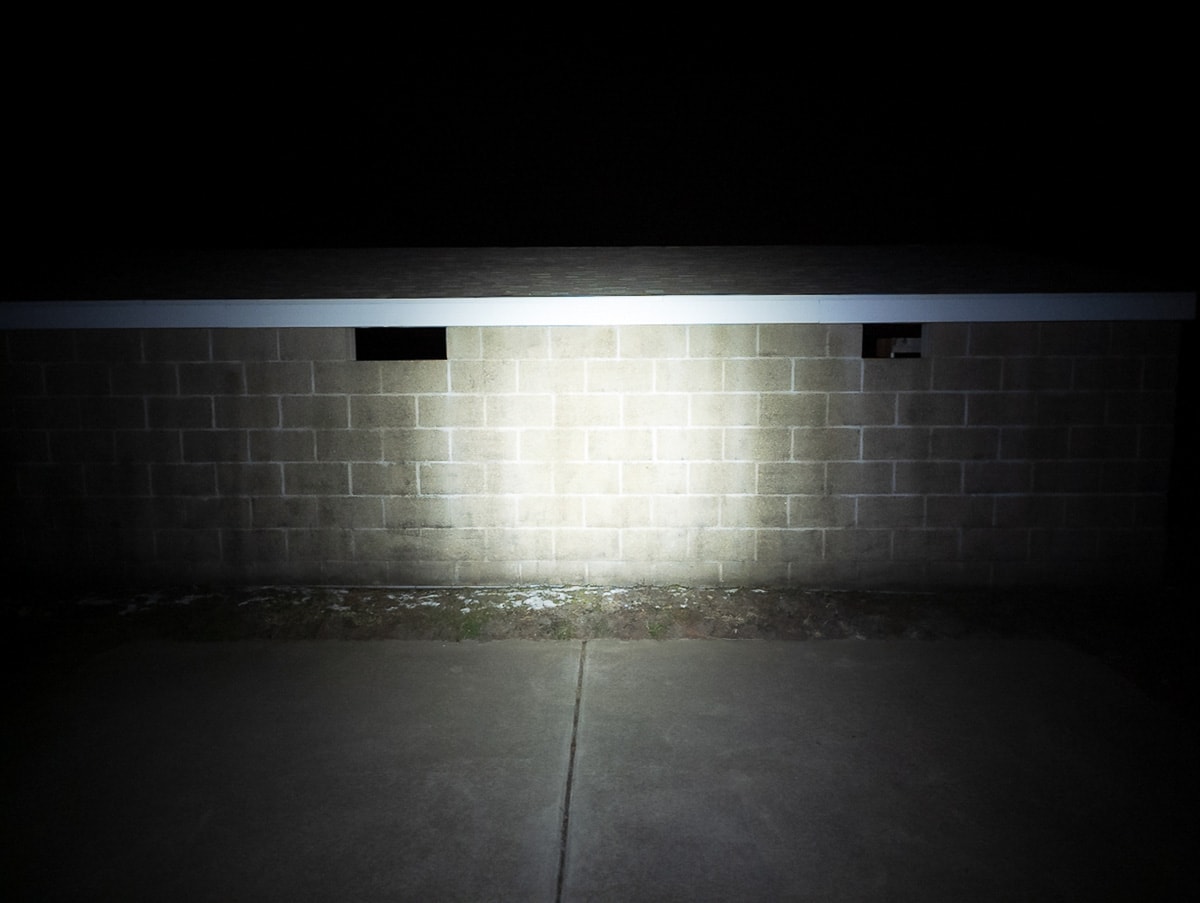
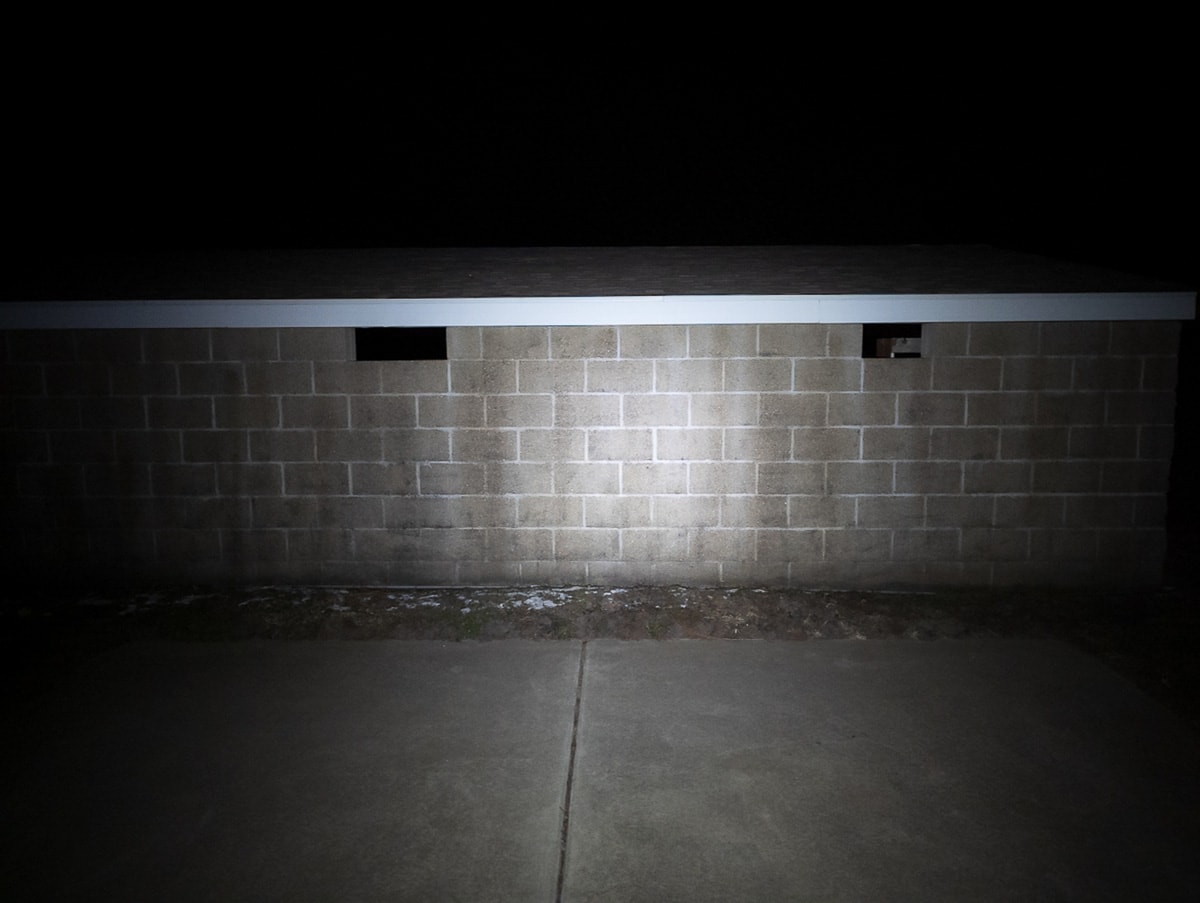
Disclaimer: This flashlight was sent to me for review at no cost by NEXTORCH. I have not been paid to review, nor have I been holding back on problems or defects.
Final Verdict
Pros
- Small and lightweight
- Neat aesthetics
- USB-C charging
- Aux LEDs (Red, UV)
- Strong steel clip
Cons
- Bluish main LED
- So-so UI
- UV wavelength of 405nm
Explanation on star ratings:
1: Avoid: a match would be a better choice – 2: Poor: significant defect or issues; almost unusable – 3: Average: some defects or issues; but still usable 4: Good: recommended (minor issues) – 5: Great: highly recommended

3.5 stars: ★★★⋆
The NEXTORCH K40 lives up to what the manufacturer claims of it. The K40 meets its lumen, intensity, and runtime specs. The LEDs and UI are just how they describe. But I’m just not a big fan of some of the decisions. The UI is restrictive – the white LED always starts on High, and there’s no real shortcuts (nor a lockout).
The tint of the main LED seems very cold. And the wavelength of the UV is less than ideal for common tasks such as verifying currency. Where I’m from, using the red & blue flashing mode could land me in jail for impersonating a police officer – so I don’t think I’ll be using that anytime soon.
The K40 is a neat light, but it’s not one that I would want to use on a regular basis.
Buy the NEXTORCH K40
Get 10% off at NEXTORCH using our exclusive discount code: 1lumen10
1lumen selects and reviews products personally. We may earn affiliate commissions through our links, which help support our testing.